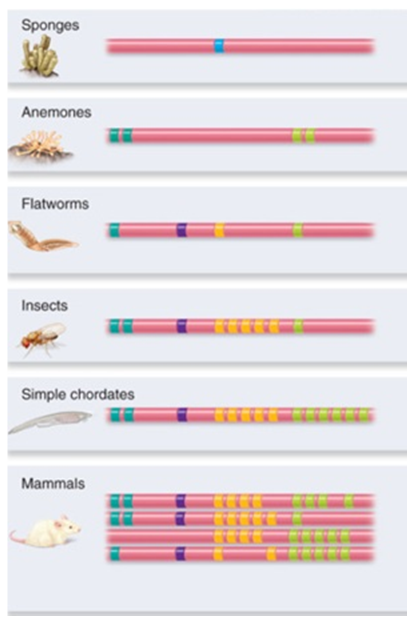________ involves separating proteins by differences in electrostatic charge
A) Affinity chromatography
B) Mass spectroscopy
C) Size-exclusion chromatography
D) Ion-exchange chromatography
E) Gel-filtration chromatography
D
You might also like to view...
Look at the chromosomes above and determine how many group(s) of Hox genes are associated with body types for each type of animal. These associations are based on anterior, group 3, central and posterior body development.

A. Mammals: 4 groups; Flatworms: 4 groups; Sponge: 2 groups; Anemones: 1 group.
B. Mammals: 4 groups; Flatworms: 4 groups; Sponge: 1 groups; Anemones: 2 group.
C. Mammals: 11 groups; Flatworms: 4 groups; Sponge: 1 groups; Anemones: 4 groups.
D. Mammals: 27 groups; Flatworms: 4 groups; Sponge: 2 groups; Anemones: 1 group.
E. All animals must have at least 2 groups because all animals have a posterior and anterior end.
Enterococcal resistance to ampicillin predicts resistance to:
a. vancomycin. b. aminoglycosides. c. cephalosporins. d. linezolid.
Effector molecules
A) are associated with the induction of enzyme synthesis. B) are associated with the repression of enzyme synthesis. C) induce conformational changes. D) are often small organic molecules. E) All of these are true.
How many molecules of ATP are needed to reduce one molecule of carbon dioxide to carbohydrate by oxygenic phototrophs during the dark reactions of photosynthesis?
A. 3 B. 2 C. 10-12 D. 4